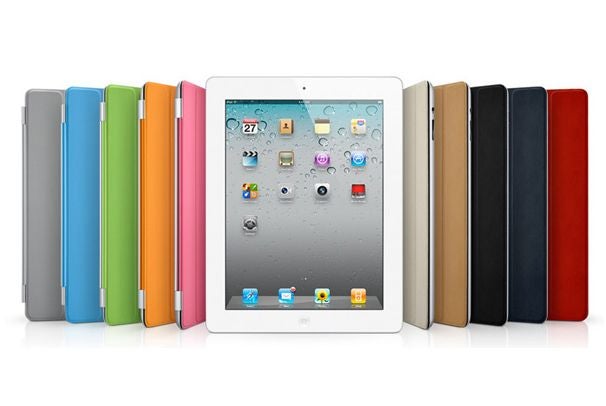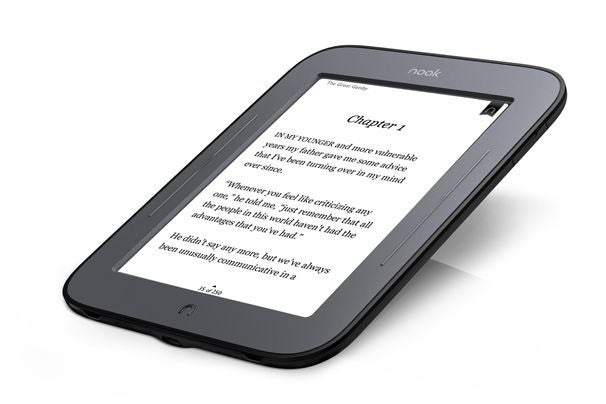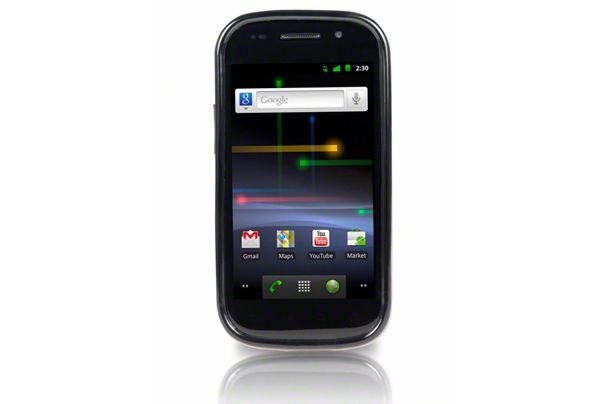The 20 Best Gadgets of 2011
HTC Thunderbolt From Verizon
The HTC Thunderbolt was Verizon's first attempt at a 4G phone, and it passed our tests
with ease. Download speeds consistently ranged between 8 megabits per
second and 12 mbps on Verizon's LTE network, which runs circles around
the HSPA+ handsets that AT&T and T-Mobile try to pass off as 4G.
Nintendo 3DS
Sure, the Nintendo 3DS
launched without a huge stable of games, and under fire by an
increasingly vibrant smartphone market, but let's not lose sight of the
technical feat at hand: It's a handheld 3D games machine that doesn't
require glasses. That's just plain cool, even if Mario's missing at the
moment.
Motorola Atrix 4G
Putting aside the visionary but tragically-overpriced laptop dock, Motorola's Atrix 4G
is still a smartphone heavyweight, with a 1 GHz dual-core processor and
4-inch, 960-by-540-pixel resolution o its qHD display (Retina who?).
Bonus points for the built-in fingerprint reader, which unlocks the
phone with just a swipe.
Sony Handycam HDR-TD10
We've seen dual-lens 3D cameras before, but Sony's Handycam HDR-TD10
is the first to sport two imaging sensors and two processors to match.
The result is is 1920-by-1080 resolution video in each channel for 1080p
3D video playback. The HDR-TD10's 3D preview screen, which uses a
parallax barrier to simulate depth, is a nice touch.
Sony Handycam HDR-TD10
$949.00 - $1,499.95Apple iPad 2
The timing of Apple's iPad 2
was as much a statement as the device itself, getting to market before
most competitors could launch their first-generation tablets. Apple
products will always have haters, but for most 10-inch tablet seekers,
the thinner, lighter, and faster iPad 2 leaves very few reasons to
consider the competition.
Samsung Series 9
Apple's Macbook Air may be a marvel to look at, but, well, it's a Mac, and some of us just prefer Windows. Enter the Samsung Series 9, which has its own svelte style and premium materials. The frame is built from aircraft-grade aluminum, and the trackpad and keyboard are a joy to use. Starting at $1,150 for the 11-inch model, the Series 9 is pricey, but surely there are some Windows users who can afford a bit of luxury.
Asus Eee Pad Transformer TF101
Hand it to Asus for launching the
first Android Honeycomb tablet that significantly undercuts the iPad on
price: $399 for the 16 GB model. The Asus Eee Pad Transformer
also differentiates from the competition with an optional keyboard and
trackpad. The dock includes full-size USB and SD jacks and its own
battery, allowing users to get some serious work done.
Casio Tryx
An ordinary digital camera at first glance, the Casio Tryx has an outer handle that swivels and rotates, so you can prop it up like a tripod or grip it in the fist like the now-defunct Flip. Get it? It performs tricks! Sigh.
Barnes & Noble New Nook
Barnes & Noble's Nook didn't get off to the greatest start when it launched in December 2009, but the new version aims to forget the past and start fresh. Gone is the color Android navigation screen on the bottom. In its place is a full E-Ink touch screen, powered by infrared sensors around the edges. Finally, Barnes & Noble seems ready to take on Amazon's Kindle.Lenovo ThinkPad X1
Business users needn't be shut out of the thin-and-light laptop party. Although Lenovo's ThinkPad X1
isn't as svelte as a Samsung Series 9 or Macbook Air, it's ready to
travel at 3.8 pounds and 0.65 inches thick. Its rugged design--minor
spills won't fry it--and respectable performance are undermined only by
weak battery life of under four hours. There is an optional external
slice available for those who need the juice.
Canon EOS Rebel T3i
Rated by PCWorld as the best DSLR for under $1,000,
Canon's Rebel T3i packs plenty of bells and whistles for entry-level
users. A 3-inch LCD flips out and swivels, and built-in flash control
lets users trigger remote flash units without a separate wireless
controller. Video capture is available at up to 60 frames per second,
and there's a neat video snapshot function that automatically cobbles
together short clips.
Dell XPS 15z
Okay, so Dell's XPS 15z doesn't win points for originality, but Windows fans surely won't fault Dell for offering MacBook Pro aesthetics in a much cheaper package. The XPS 15z's base model sells for $999, compared to $1,799 for the cheapest 15-inch MacBook Pro. Insert unicorn tear joke here.Eye-Fi Mobile X2
Although the Eye-Fi brand has been around for years, the Eye-Fi Mobile X2
is the company's first SD card to connect directly to iPhones and
Android phones over Wi-Fi. That means you can transfer photos from
camera to phone, and then share them on Facebook or Twitter or
wherever--with no wires and no PC.
T-Mobile G2x (with Google)
LG's beast of a smartphone hits all the high notes: A dual-core 1 GHz
processor, an 8-megapixel camera, a 1.3-megapixel front-facing camera,
HDMI out, and support for T-Mobile's HSPA+ network. The T-Mobile G2x's minimalist hardware design gets out of the way, as does the software, which runs a pure, stock version of Android.
Fujifilm Finepix X100
The Fujifilm Finepix X100's retro stylings are so cool that no one will question whether you know what you're doing. But beyond the facade lies an excellent camera, with built-in lens filters, a DSLR-size sensor, and an F2.0 lens. So what if there's no optical zoom? You'll want to get in close so the subject can get an eyeful of that camera body, anyway.Verizon iPhone 4
After years of rumor and speculation, the Verizon iPhone 4
finally arrived last February. It's not much different than the
AT&T version, except that it actually excels at making phone calls
from notoriously unreliable places--like New York and San Francisco.
Unsurprisingly, metro geeks rejoice in unison.
Apple 32GB iPhone 4 (CDMA, Verizon)
$423.00 - $599.00Livescribe Echo Smartpen (2GB)
Lots of writers rave about the Livescribe smartpens, which use special paper to create digital backups of handwritten notes, while recording audio that's synced to every stroke. But they've always been a bit pricey at $150 and up, not including the paper. A new 2 GB model, the Echo, sells for $99, pushing Livescribe into impulse-buy territory. And a new service called Livescribe Connect allows the pen to send files to Facebook, Evernote, Google Docs, and other online sources.ThinkGeek iCade
ThinkGeek's iCade was only supposed to be an April Fool's Joke, but the idea of a tabletop arcade cabinet powered by the iPad was so awesome that ION went ahead and built it. The $100 cabinet is best-suited for Atari's Greatest Hits, a suite of classic video games that just doesn't feel right without a proper joystick and buttons.
Amazon Kindle with Special Offers
Hardware-wise, there's nothing new
about the Kindle with Special Offers, but Amazon's onto something with
its ad- and discount-subsidized e-reader. Priced at $114--$25 cheaper
than the ad-free version--it quickly became the most popular e-reader on
Amazon's Website, and customer requests prompted Amazon to launch a 3G version for $164. And so begins the era of ad-supported hardware.














































































